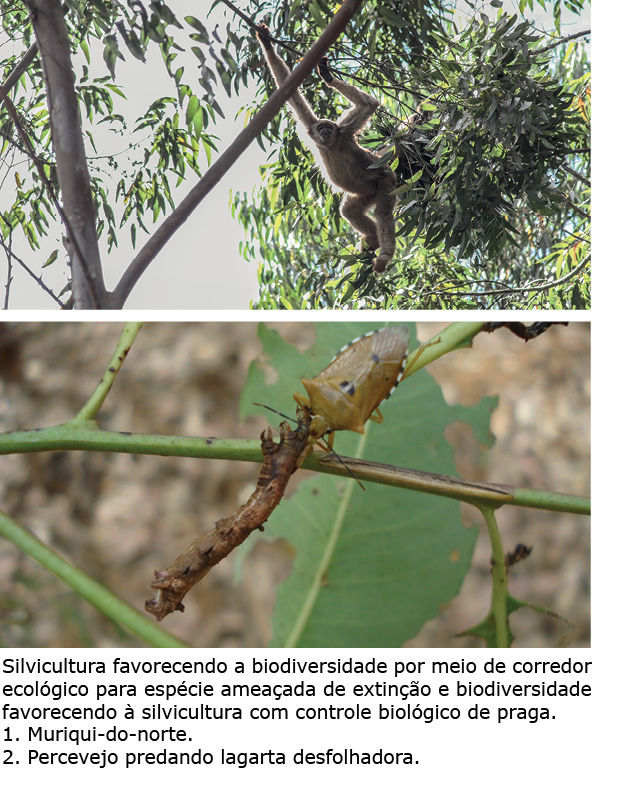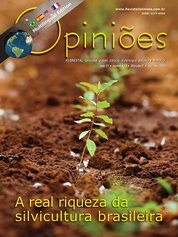Jacinto Moreira Lana
Master Environmental Specialist at Cenibra
OpCP74
A possible and necessary symbiosis
All forms of life have equal rights to live, produce their offspring and maintain their naturally evolutionary processes. This right is fundamental because each living being plays an important role in the complex web of life. Respect for the lives of all species is genuine and indisputable, and is therefore sufficient to justify the adoption of actions to conserve biodiversity.
The value of biodiversity is not at all subjective. The variety of life forms is a pillar that supports and makes the functioning of our planet viable. Environmental management to obtain consumer goods must consider that it is desirable to achieve a balance between the conservation of biodiversity and the maintenance of agroforestry production processes. And this must also consider the planetary scale, so that agroforestry production contributes positively to maintaining the ecological processes that enable the balanced functioning of the planet.
Simply put, the relationship with the environment must be a win-win. Production processes benefiting conservation and conservation benefiting production processes. This characterizes the condition of environmental sustainability in which biodiversity is a pillar of support. The wood production process is no different, as forestry is an economic activity that interacts very significantly with environmental conditions. Forestry can contribute to the conservation of biota and benefit from the ecosystem balance provided by the presence of biodiversity.
Silvicultural management favors the conservation of biodiversity due to several factors intrinsic to the cultivation of trees and the adoption of sustainable practices, as shown in the following examples:
• All forms of life have equal rights to live, produce their offspring and maintain their naturally evolutionary processes. This right is fundamental because each living being plays an important role in the complex web of life. because it is a crop that forms a forest matrix, which makes the landscape more permeable and with conditions for wide use by wild fauna;
• Afor maintaining, in a connected way, large territorial extensions with remnants of native vegetation, forming mosaics with planted forests;
• Abecause it is low-intensity management, with operations intensified only approximately every seven years, a condition that favors the establishment of wild fauna populations;
• Ahigh carbon removal from the atmosphere from photosynthesis in planted forests and maintenance of large stocks in native forests;
• Alow quantity used and safe way of using toxic inputs;
• Aadoption of soil and water conservation practices;
• Aadoption of measures to restore ecosystems and floristic and faunal composition;
• Aadoption of sustainable management practices certified by organizations with international legitimacy.
 The contribution of biodiversity to production processes is notable, however, it is still little known and measured. Some processes are completely dependent on biodiversity, such as citrus farming, coffee farming and cotton farming, which depend on pollination by living organisms that inhabit native ecosystems.
The contribution of biodiversity to production processes is notable, however, it is still little known and measured. Some processes are completely dependent on biodiversity, such as citrus farming, coffee farming and cotton farming, which depend on pollination by living organisms that inhabit native ecosystems.
In forestry, we have evidence of several types of biological pest control through biodiversity. We have also identified that there is a direct correlation between protected areas in good condition and lower pest infestations. As an example, predation of defoliating caterpillars by wild birds, parasitoid wasps and bed bugs has already been observed. Findings such as these led to a decision not to use chemical products to carry out control, avoiding environmental contamination, the risk of contact with workers, in addition to product acquisition and application costs.
The opposite has also frequently been observed, that is, the damage caused by pests is more significant on farms where the areas occupied by plantations are more extensive and contiguous. Furthermore, in these locations, the areas designated for conservation have not yet been fully restored, or are not very representative in terms of quantity, both within the farms and in the neighborhood.
It is also important to mention that the biodiversity present in the soil creates a living system necessary for the proper functioning of plant support and nutrition processes and water conservation. A living soil is a sine condition qua non for sustainable agricultural and forestry production and this biodiversity, which includes countless microorganisms, annelids, fungi, arthropods, mycorrhizae and many others, is commonly forgotten or little mentioned.
This information is still generic and based on few studies in specific conditions, but it already attests to the value of biodiversity as a supporter of an ecosystem balance necessary for forestry activities. And, as little is known about the nuances of the phenomena that support the desired ecosystem balance, scientific studies must be continued and expanded.
The aim of these studies is to deepen knowledge about natural ecological processes, aiming to improve cultivation techniques, considering biodiversity as an ally. This search should result in better ways to conserve biodiversity and support the development of management techniques that consider biodiversity as an element that supports forest productivity.
There is no expectation of finding a simplified recipe suitable for large territorial extensions. Ecological processes are different under different climate, soil and regional plant matrix conditions. However, it may be applicable to adopt landscape metrics as recommendations for balanced management, considering, for example, minimum percentages of representation of native vegetation in the landscape, degree of connectivity between areas with native vegetation, age mosaic and genetic difference among cultivated species, reducing the core area of plantations through the creation of strips with native vegetation or promoting forest restoration in the neighborhood.
It is important to highlight that acting with the neighborhood can be a necessary strategy, especially in those conditions where predatory land uses predominate, where in addition to not having biodiversity as an ally, the neighborhood also brings the threat of forest fires, invasion of exotic species and scarcity or excess water, for example.
Finally, in a scientifically proven context of climate change, when the frequency of catastrophic scenarios is increasing, such as excesses and scarcity of water, occurrences of extreme temperature events, conditions that will bring risks to crops, increasing the resilience of ecosystems through Biodiversity conservation should be considered one of the strategies for the sustainability of forestry production.




